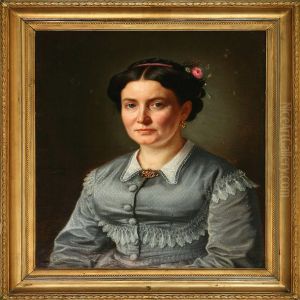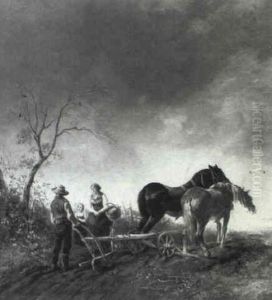Leopold Hartmann Paintings
Leopold Hartmann was an Austrian artist, born in 1886 in Vienna, Austria. His life spanned a period of significant upheaval and transformation in Europe, witnessing the end of the Austro-Hungarian Empire, both World Wars, and the shifting landscapes of art movements through the 20th century. Hartmann's work, though not as widely recognized as some of his contemporaries, offers a unique lens into the cultural and artistic sensibilities of his time.
Hartmann's artistic journey began in Vienna, a city that was a vibrant center for art and culture in the late 19th and early 20th centuries. He received his formal art education at the Academy of Fine Arts Vienna, where he was exposed to a variety of artistic influences, including the Secessionist movement, which sought to break away from traditional artistic forms and conventions. Vienna at the time was a melting pot of artistic innovation, with figures like Gustav Klimt and Egon Schiele reshaping the boundaries of art with their radical approaches to form and color.
Throughout his career, Hartmann developed a style that was deeply personal and reflective. While he dabbled in various styles and mediums, his work often explored themes of human emotion, nature, and the existential dilemmas of his era. Hartmann's art did not gain the same level of fame as some of his peers, but his contributions were nonetheless significant in the context of Austrian art history. His paintings and drawings are characterized by their emotional depth and technical precision, reflecting the tumultuous times in which he lived.
The interwar period and the aftermath of World War II were particularly challenging times for artists in Europe, and Hartmann was no exception. Despite the difficulties, he continued to produce work that was introspective and poignant. After World War II, Hartmann's work, like many of his generation, reflected a search for meaning and stability in a drastically changed world.
Leopold Hartmann passed away in 1968, leaving behind a body of work that, while perhaps not as celebrated as that of some of his contemporaries, offers a compelling glimpse into the complex tapestry of 20th-century art. His legacy is preserved in various collections and museums in Austria and beyond, serving as a testament to his artistic journey and the historical moments he lived through.


